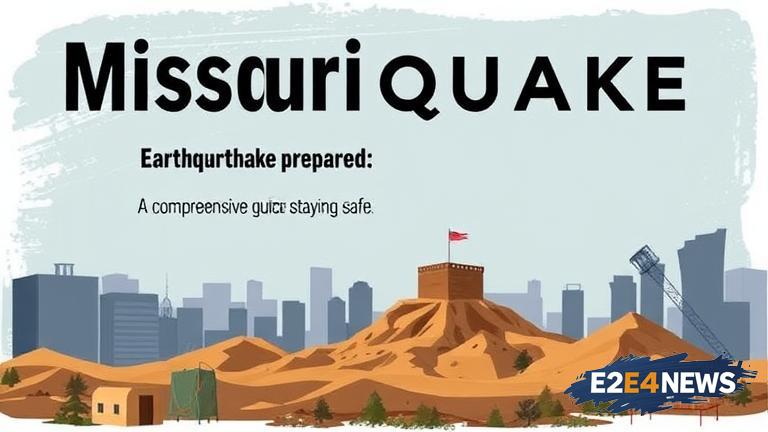Missouri is located in a region prone to earthquakes, and it’s essential for residents and businesses to be prepared. The state is situated near the New Madrid Seismic Zone, which is capable of producing significant earthquakes. In fact, the region experienced a series of powerful earthquakes in 1811 and 1812, which were felt as far away as Washington, D.C. and Charleston, South Carolina. To prepare for earthquakes, it’s crucial to have a plan in place, including a emergency kit with essential supplies such as food, water, and first aid materials. Residents should also practice earthquake drills, such as the ‘drop, cover, and hold on’ method, to ensure they know what to do in case of an earthquake. Additionally, homes and businesses should be retrofitted to withstand earthquakes, including securing heavy objects and installing earthquake-resistant roofing. The Missouri Department of Public Safety provides resources and information on earthquake preparedness, including a earthquake preparedness guide and a list of emergency contact numbers. The Federal Emergency Management Agency (FEMA) also offers resources and funding for earthquake mitigation and preparedness efforts. Missouri residents can also participate in earthquake drills and exercises, such as the annual Great Central U.S. ShakeOut, to practice their emergency response skills. Furthermore, the state has implemented various initiatives to improve earthquake preparedness, including the development of earthquake-resistant building codes and the creation of a statewide earthquake emergency plan. The plan includes procedures for evacuation, search and rescue, and emergency medical response. The Missouri Earthquake Preparedness Program also provides training and education for emergency responders, including firefighters, police officers, and emergency medical technicians. In addition, the program offers resources and support for vulnerable populations, such as the elderly and people with disabilities. The American Red Cross also provides earthquake preparedness resources and training, including first aid and CPR classes. The organization also offers a earthquake preparedness app, which provides users with emergency alerts, safety tips, and resources. The app also allows users to create a personalized emergency plan and share it with family members and friends. Moreover, the Missouri Geological Survey provides information on earthquake hazards and risks, including maps and data on earthquake-prone areas. The survey also conducts research on earthquake science and mitigation, including the development of new technologies and strategies for reducing earthquake risk. The University of Missouri also offers courses and degree programs in earthquake science and engineering, including a certificate program in earthquake hazard mitigation. The program provides students with the knowledge and skills needed to work in earthquake-related fields, including emergency management, urban planning, and engineering. In conclusion, earthquake preparedness is crucial for Missouri residents and businesses, and there are many resources available to help individuals and communities prepare. By having a plan in place, practicing earthquake drills, and staying informed, Missourians can reduce their risk of injury and property damage in the event of an earthquake. It’s also essential to stay up-to-date with the latest news and information on earthquake preparedness, including updates from the Missouri Department of Public Safety and FEMA. By working together, we can create a safer and more resilient community in Missouri.
